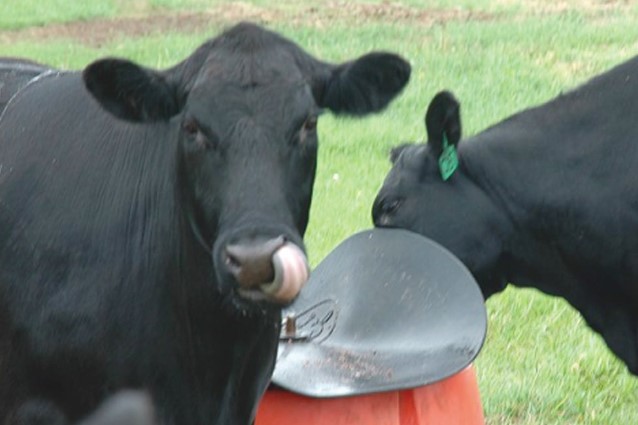
Dr. David Lalman, Oklahoma State University Professor and Harrington Chair, Extension Beef Cattle Nutrition Specialist regularly offers reports as part of the weekly series known as the “Cow Calf Corner,” published electronically by Dr. Peel and Mark Johnson. Today, Dr. Lalman is addressing feed intake for mama cows.
An accurate estimate of feed intake is a critical element in determining a cow’s nutrient requirements at different stages of production. It is also necessary to establish appropriate stocking rate and carrying capacity of a given land base. For those reasons the National Academy of Sciences, Engineering and Medicine developed and published an equation in 1996 to predict feed intake in beef cows (Nutrient Requirements of Beef Cattle, Seventh Revised Edition). This equation was recommended for use once again in the eighth revised edition published in 2016. That equation predicts increasing feed intake as cow size increases and as diet digestibility (energy density) increases. This equation is used to calculate and express nutrient requirements on a percent of daily diet dry matter intake basis in many publications and beef cattle nutrition software programs.
One of our recent master’s degree graduates, Megan Gross, reviewed the literature from which this important equation was developed. From her findings, Megan identified several important points. First, the equation was developed using beef cow intake data published between 1979 and 1993. Certainly, the U.S. cattle population has changed considerably since then. Second, the equation relies on numerous experiments where indigestible markers (such as chromic oxide or alkanes) were used to predict feed intake. This technique is a reasonably reliable method to rank animals or treatment on a relative basis, but it tends to underestimate feed intake. Another issue with the marker-based data is that feed intake is estimated for only a short period of time; usually around five to seven days. Currently, the Beef Improvement Federation is recommending a minimum period of 42 days to ensure 35 days of high-quality feed intake data. Next, the original data set included studies where animals were housed in metabolism stalls or tie stalls. Our experience suggests that feed intake declines when animals are confined in these types of facilities. Finally, a few of the studies used in the original data set contained diets where protein requirements were determined to be insufficient. Diets low in protein reduce digestibility, passage rate, and feed intake.
Next, Megan reviewed the literature to find more recent beef cow feed intake publications. To be included in her data set, the following restrictions were required to be met:
1. Data either published or studies conducted between 2003 and 2022.
2. Cows had ad-libitum (free choice) access to feed.
3. No marker generated data.
4. No metabolism or tie stall data.
5. Only studies with adequate dietary protein were included.
Newer feed intake technology available over the last 20 plus years has increased the availability of beef cow feed intake data. Using the restrictions mentioned above, Megan was able to identify 85 different observations (or treatment means) from which she could test the original equation.
In general, the old equation predicted feed intake reasonably well when diet digestibility was low (55% TDN and lower). However, when diet digestibility was moderate to high (like grazing season conditions), feed intake was underestimated. Underprediction of feed intake was especially pronounced in lactating cows (Gross et al., 2024). Figure 1 provides a graphical representation of feed intake estimates over a range of diet digestibility (TDN) from the 1996 compared to the 2024 equation.
Figure 1. Predicted feed intake in 1,200 lb lactating beef cows over a
range in diet digestibility.
In general, this work suggests that beef cows consume considerably more moderate and high- quality feed or forage than expected…at least according to the widely used NASEM (1996 and 2016). In the next article, we will review validation results using a different set of guidelines established many years ago to predict feed intake in beef cows.

















